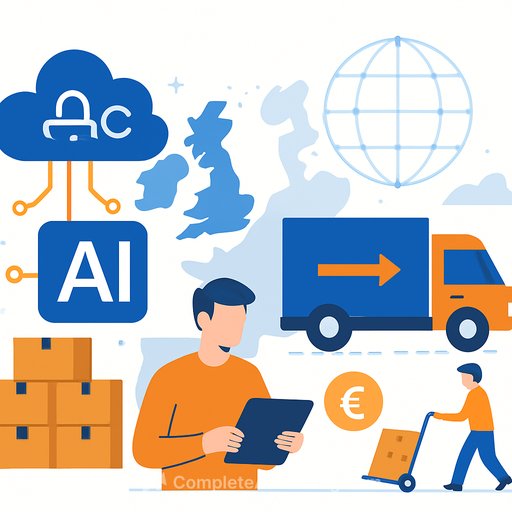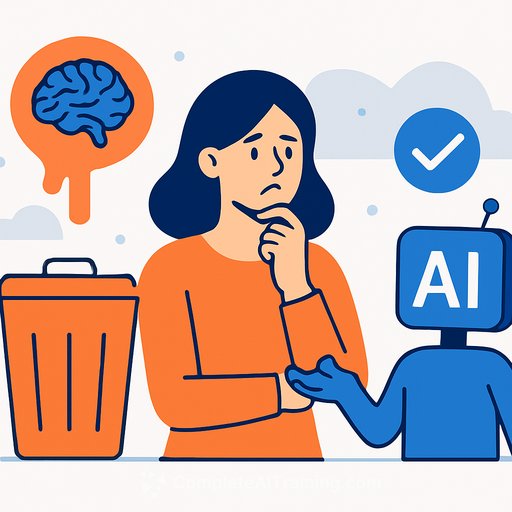Supplements Beyond Buzzwords: From Hype to Purposeful AI in the Workplace
Sumaiya works in the CEO's office, managing a constant stream of board documents, memos, and executive briefs. Her role demands accuracy, speed, good judgment, and clarity. During board meeting season, the workload can become overwhelming—dozens of reports to review, summaries to prepare, and memos to draft, often late into the night. Her biggest challenge was condensing hundreds of pages into digestible notes for senior leaders while still delivering detailed reports for colleagues.
Today, her routine is transformed. With Microsoft Copilot, she can summarise hundreds of memos within an hour, saving valuable time and mental energy. Instead of being buried in paperwork, she focuses on helping the executive board sharpen priorities and prepare for meaningful discussions. The result: higher-quality work, more mental space for creativity, and even the chance to leave the office on time and spend evenings with her family.
Shabab, an analyst in the Business Intelligence team, also benefits from AI. His job involves processing hundreds of reports weekly, turning raw data into insights for business managers. Previously, this meant long nights analysing spreadsheets, creating charts, and preparing presentations for early morning meetings. Now, AI and robotics handle much of this work. By the time Shabab arrives at the morning meeting, his analysis has already been processed, visualised, and shared automatically with the relevant managers. Freed from manual tasks, he concentrates on interpreting insights, challenging assumptions, and guiding smarter decisions.
Sumaiya and Shabab’s experiences show a broader truth: AI is more than efficiency; it transforms how employees work. It frees them from repetitive tasks, allowing focus on creativity, collaboration, and problem-solving. For this to succeed, organisations must build a culture that excites employees about AI instead of instilling fear.
Building a Culture of Curiosity, Not Fear
AI adoption often stirs fear. Many employees worry AI will replace their jobs. This concern is natural but, if unaddressed, can quietly stall progress. Research shows 37% of workers fear job loss due to automation, while nearly 60% believe AI will improve job satisfaction by reducing repetitive work. This mix of fear and optimism highlights the role of leadership in shaping attitudes.
Leaders must clarify that AI is a tool requiring human guidance and judgment. It cannot operate independently. Its real value depends on people who steer it toward meaningful outcomes. Organisations should invest in training, awareness, and practical experience. Employees must be encouraged to experiment, fail safely, and learn continuously. This approach turns fear into empowerment and scepticism into curiosity.
Then What?
Consider a hospital scenario. Long queues, bill payments, form-filling, and test selections used to exhaust patients. Now, AI-powered kiosks allow patients to book appointments, select doctors, pay bills, and receive test results with ease. Staff who handled these tasks are not redundant; they focus on critical patients, emergency management, and compassionate care. This shift is a clear example of AI reducing administrative burdens, letting people focus on work that requires empathy and creativity.
This model offers lessons for organisations in Bangladesh: automating routine tasks so employees can focus on higher-value activities.
The 4Ps of AI: Purpose, Prototyping, Pivoting, Perfecting
AI adoption without a clear framework often fails. Studies show 70–80% of AI projects don’t deliver expected results—not due to the technology, but because organisations lack clarity, the right teams, or leadership support. Every organisation is unique. Before diving into AI, leaders must ask:
- What are our biggest business challenges today?
- What tasks do we struggle with that AI could improve?
This is the first P—Purpose. AI efforts must align with clear business priorities.
Next comes Prototyping: testing real use cases on a small scale. Not everything will succeed, and that’s acceptable. The key is fast learning.
Pivoting means adapting when pilots reveal new insights. Leaders should shift focus if needed instead of pushing through unproductive paths.
Finally, Perfecting is about refining continuously until AI initiatives deliver measurable impact. This requires patience, management attention, and the right people. A small group of passionate, curious individuals often drives AI progress better than large, half-committed teams.
The Practical Roadmap: Where to Begin
Here’s a practical approach to starting AI adoption:
- Identify a few everyday pain points (e.g., HR queries, travel approvals, meeting summaries).
- Form a cross-functional "AI squad"—internal champions who explore use cases and inspire leadership.
- Start small, demonstrate quick wins, then scale gradually.
This roadmap focuses on equipping people with tools to improve their work—not replacing them.
Where Is the Money? How Much to Invest?
Investment in AI should be viewed as a Horizon 3 bet: preparation for the next 3–5 years. Massive upfront budgets are not necessary. Instead, spend deliberately and in phases.
Research shows companies gain 10–20% productivity improvements after successful pilots. For example, an AI agent that guides employees through HR processes—travel bookings, bill settlements, memo approvals—can save thousands of hours across an organisation. This creates a strong case for scaling.
Investments should follow demonstrated feasibility and impact, not hype.
Rushing Without Guardrails?
AI carries risks if adopted without proper governance. Poorly managed AI can produce misleading results, data quality issues, and privacy risks, eroding trust among employees and customers.
Many AI projects fail due to weak governance, not lack of use. Organisations must build strong data management practices alongside AI adoption—clarifying data ownership, cleaning datasets, setting access rules, and monitoring outputs. Early discipline ensures responsible, trustworthy AI deployment.
The Bangladesh Context: Complex but Necessary
In Bangladesh, this AI journey faces challenges. Manual processes remain common, and labour costs are often lower than technology investments. However, this approach is unsustainable.
Building AI literacy and leadership that can guide teams through change is essential. Beyond efficiency, AI adoption supports long-term employee well-being. Freed from repetitive tasks, employees gain time and energy for creative, meaningful work. This leads to healthier, more resilient organisations.
A Closing Reflection: It’s for Us, Humans
AI is not about replacing jobs; it’s about transforming them. The opportunity is to improve professional culture, employee well-being, and work quality. This means inspiring employees, equipping them with AI tools, and building confidence to use them effectively.
By fostering curiosity and providing training, organisations can encourage creativity, innovation, and renewed pride in work. The question is: will we approach AI with fear, or with curiosity and courage?
For managers interested in advancing their AI knowledge and skills, exploring practical courses and training can be a great start. Resources like Complete AI Training's latest courses offer hands-on learning tailored to workplace needs.
Your membership also unlocks:






